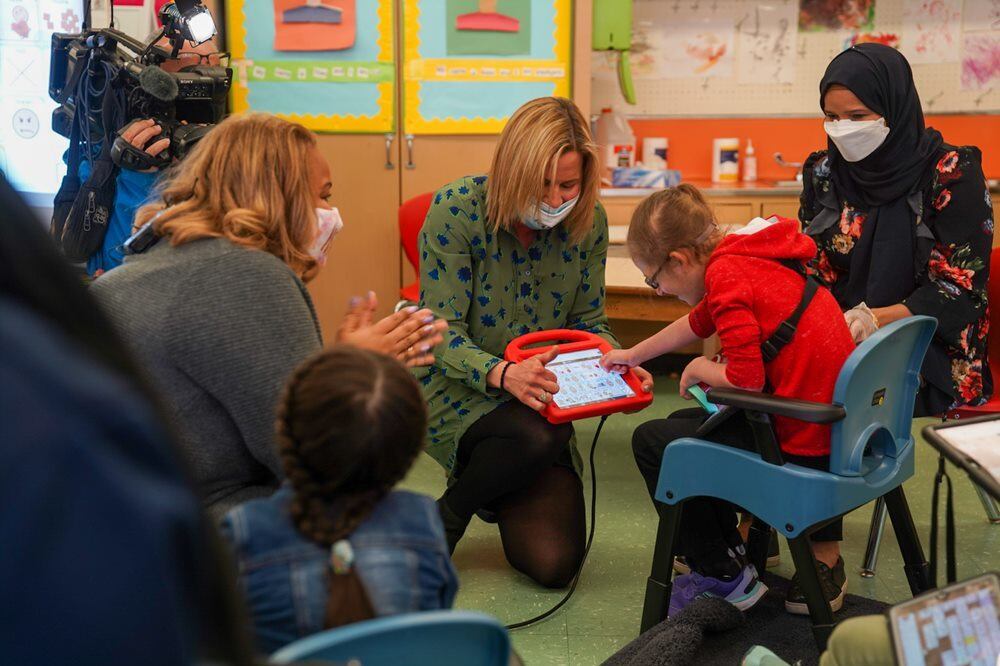Significantly fewer students were referred for special education evaluations last year, dropping 57% since the year before the pandemic started, raising concerns that thousands of students have not been identified for services they may need.
During the 2020-2021 school year, 9,457 students were referred for evaluations to determine if they need more intensive support, such as smaller classes with a special education instructor or other services such as speech or occupational therapy. That’s down from roughly 16,000 the previous school year, and nearly 22,000 in 2018-19, the school year before the pandemic hit, according to an annual report delivered to City Council by the education department late Wednesday.
The report, which was released more than two weeks after the legal deadline and just hours before a City Council hearing on special education, does not reveal exactly why so many fewer students were flagged for services.
Pandemic disruptions last school year — when the vast majority of students were learning remotely — likely played a significant role.
It’s possible that families were overwhelmed and less likely to seek out evaluations or that educators were not able to pick up on typical cues that a student might need additional services in virtual classrooms.
Shrinking enrollment may have also played a role, as a significant chunk of referrals for special education are made in the early grades, which saw the biggest year-over-year drop in enrollment. (The decline in referrals for special education services, however, far outpaced the enrollment drop.)
“The drop in referrals likely means that there are students with disabilities that went all year without getting the help they needed and maybe continuing into this year without getting needed support,” said Randi Levine, a special education policy expert at Advocates for Children, a nonprofit that helps low-income families navigate the city’s special education system.
Black students saw a disproportionately large decrease in referrals for services, falling by more than half last school year and nearly 66% since the year before the pandemic. (Black students opted for remote learning at higher rates.)
At a City Council hearing on Thursday, department officials said the overall referral rate for special education evaluations had ticked up this school year and is closer to pre-pandemic levels.
The city’s statistics paint a more encouraging trendline for the roughly 192,000 students with disabilities who already had Individualized Education Programs, or IEPs, legally binding documents mapping out services tailored to each student’s needs.
Nearly 88% of students with disabilities received the correct “program” services by the end of the school year, such as a small class exclusively for students with disabilities, or a larger one with a mix of special education and general education students typically staffed by two teachers. That’s up nearly four percentage points from the 2019-2020 school year and about two points higher the school year before the pandemic hit.
Still, that left nearly 24,000 students who did not receive some or all of the specialized instruction they were entitled to. Because these figures are tabulated at the end of the school year, a student who is not receiving appropriate services for months could still be counted as getting the right services as long as they are in place by the last day of school. A significantly higher share of students were not receiving all of their services in the middle of last school year, city figures showed.
“We have prioritized our most vulnerable populations every step of the way during this crisis, and this report reflects the critical progress we’ve made in support of our students with disabilities,” Chancellor Meisha Porter said in a statement.
City officials said they have been working to improve the delivery of special education services, including closer reviews of school data to identify and help close gaps in services, according to Sarah Casasnovas, a department spokesperson.
The report doesn’t necessarily reveal some of the most common ways students with disabilities were impacted by the pandemic, however. Some students waited for weeks or months before receiving an iPad from the city to complete schoolwork and others simply struggled to engage with special education services remotely.
To help catch students up, the city is spending nearly a quarter billion dollars on extra support, requiring every school to provide additional small group instruction and therapies after school or on Saturdays. But the program’s rollout has been delayed until Dec. 6, and the first wave will only serve the highest need students. It’s unclear when most students with disabilities will have access to it.
About 500 schools have launched after-school or Saturday programming so far, or less than one third of schools citywide, said Christina Foti, a deputy chief academic officer who oversees special education.
“The vast majority of our schools have indicated that they are going to begin the services by the end of the month,” Foti said. “We are in the process of developing plans for every one of our students with IEPs.”
Foti indicated that most schools are planning to offer the program through a mix of in-person and virtual offerings. The decision to allow schools to offer the program virtually has drawn criticism from some advocates who argue it undermines the program’s purpose of helping students who may have struggled with remote instruction during the pandemic.






